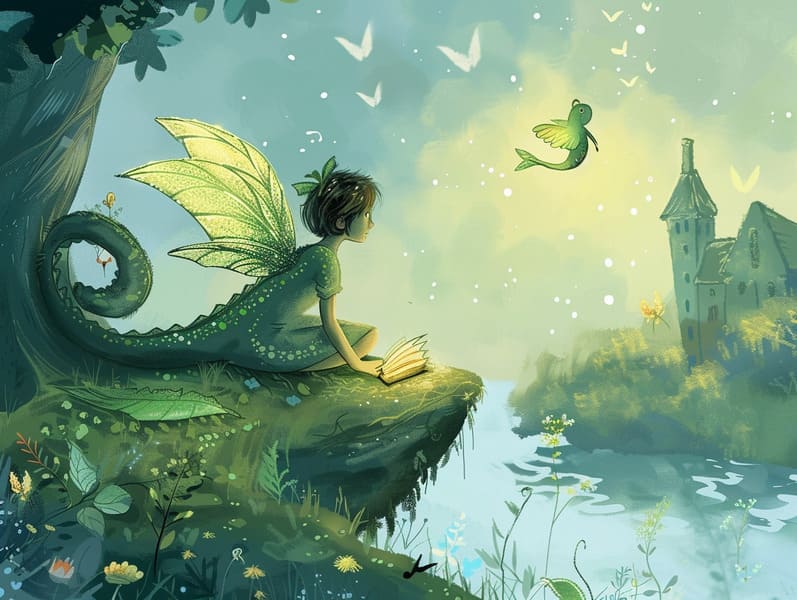The Journey of Popular Fairy Tales with the Perpetual Charm.
The Journey of Popular Fairy Tales with the Perpetual Charm.
Blog Article

Ancient fairy tales have enduring presence. These narratives have been spoken from one generation to the next ages before they were ever recorded. They came from a variety of cultures, including Asian traditions. They were initially conveyed among grown-ups, often carrying themes and messages aligned with the societal norms and beliefs of the time.
The Grimm brothers, Jacob and Wilhelm (the Grimm brothers), were among the first to collect and release many of these beloved fairy tales. Their published works, "Grimm's Fairy Tales," included classics like "Cinder Maid," "Little Brother and Little Sister," and "Schneewittchen," which have since become mainstays in the world of beloved fairy tales. Similarly, H. C. Andersen's whimsical stories, such as "The Little Mermaid," and "The Duckling's Story," have captivated hearts worldwide, cementing their place in the pantheon of famous fairy tales.
Despite being ancient, these stories remain as relevant as ever, especially as children's night stories. These magical stories are now available in many formats, including gorgeously illustrated books, magical animations, and free fairy tales online.
Their unwavering allure can be credited to several whimsical characteristics:
Significant Morals: Timeless fairy tales often present important moral lessons. Narratives like "The Tale of the Boy Who Cried Wolf" teach the importance of sincerity, while "The Tale of the Tortoise and the Hare" show the merits of perseverance and humility. These stories offer little ones clear distinctions between truth and falsehood, guiding their moral compass in a soft yet deep way.
Sympathy and Perception: Ancient fairy tales frequently showcase personalities facing struggles and tests, provoking young readers to connect with their struggles and champion their triumphs. For instance, "Beauty and Her Beast" teaches us the virtue of valuing inner qualities to understand the inner self of a soul, building kindness and understanding.
Cultural Comprehension: Many ancient fairy tales are rooted in the cultural contexts from which they originated. Understanding these stories can provide intriguing perspectives into different traditions, nurturing a sense of global appreciation and acknowledgment.
Creativity and Fantasy: The mythical elements in timeless fairy tales—enchanted forests—enhance children’s innovative ideas. These narratives guide readers to mythical realms, encouraging innovative thinking and a sense of delight that stays a lifetime.
Ancient fairy tales are not only enchanting but also instructive. They work as fantastical tools in fostering various cognitive and emotional skills in kids. When fairy tales are narrated, they advance speaking abilities by offering new terms and complex sentence structures. This practice also fosters listening abilities and attention span, as the young track the narrative, eager to see what happens next.
Furthermore, deliberating the themes and characters of fairy tales can improve analytical skills and cognitive skills. Young readers are guided to discover patterns, anticipate outcomes, and figure out cause and effect. These analyses also boost kids communicate their thoughts and feelings, contributing to their here emotional intelligence.
In today’s electronic age, the abundance of web-based fairy tales has made these tales more within reach than ever. Online resources and apps give comprehensive collections of famous fairy tales that can be viewed or listened on anytime, anywhere. Fairy tales told out loud are particularly well-liked, offering an enjoyable way for the young to relish these delightful tales. Spoken stories and voiced videos take characters and settings to life, often joined by mesmerizing sound effects and background music that boost the story adventure.
The lasting appeal of old fairy tales lies in their ability to change to present days while preserving their core values. Contemporary modernizations of these narratives often present more different figures and modern settings, making them familiar to today’s audience. However, the fundamental themes of gallantry, warmth, and justness remain unchanged, continuing to influence audiences of all ages.
Ancient fairy tales also offer a sense of solace and closeness. They make accessible a organized narrative with a straightforward beginning, middle, and end, often ending with the finalization of conflicts and the triumph of right over wrong. This uniformity can be solacing for kids, presenting a sense of steadfastness in an ever-changing world.
Traditional fairy tales continue to spellbind and train new generations, maintaining their magic and importance in modern society. As bedtime stories for kids, they deliver up a perfect blend of charm and understanding, enhancing moral values, empathy, and creativity. The prevalence of internet fairy tales and the sought after status of fairy tales spoken ratify that these traditional narratives remain obtainable to new generations.
By continuing and telling these tales, we continue to honor the rich tapestry of cultural heritage and cultural heritage. Whether you are viewing a richly illustrated book, seeing a virtual library, or playing an voice book, the grace of popular fairy tales is always within reach. These stories show us of the lasting impact of narratives and its ability to bond us across centuries and lands.
Even if you are experiencing a richly illustrated book, delving into a cyber collection, or listening via an read-aloud story, the grace of Grimm's fairy tales is always within reach.
These fairy tales emphasize of the ageless force of narratives and its ability to draw us together across epochs and places, casting a charm that charms and informs alike.